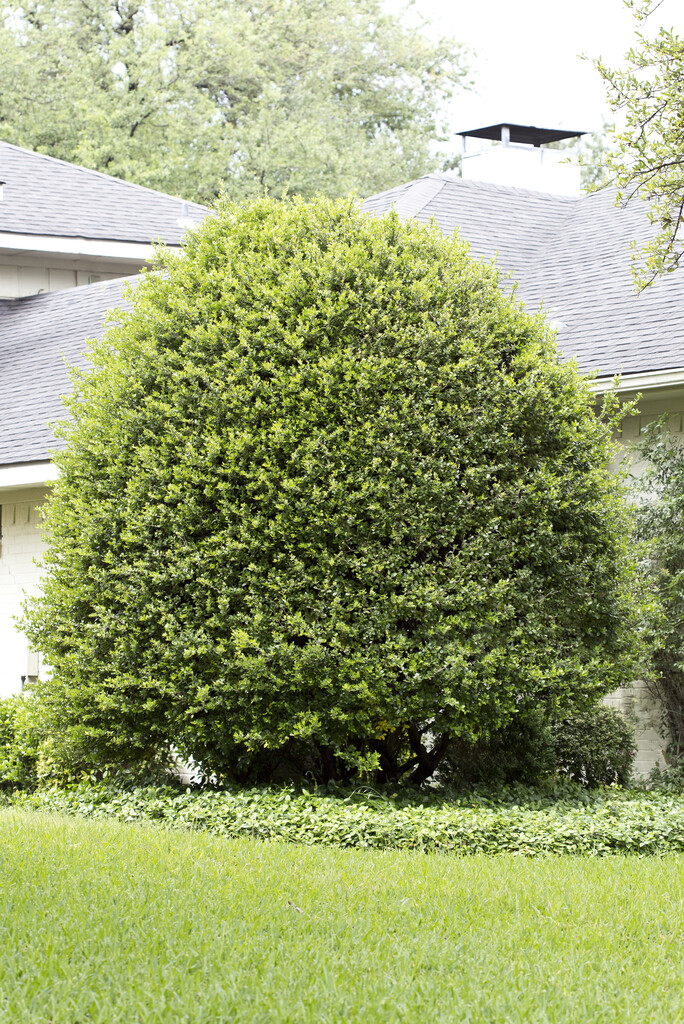Ilex vomitoria
yaupon
Large evergreen shrub or small tree about 6m tall, with dense branches. Dark glossy green and gently serrated leaves to 4.5cm long, are often purple tinged when young. Small white flowers in spring are followed in autumn by bright red berries, in some forms they are yellow, produced on female plants if pollinated by a male plant
Other common names
black-drink treeCarolina tea plant
see morecassina
emetic holly
South Sea tea plant
dahoon
Synonyms
Ilex cassine Walt. non L.Size
Ultimate height
4–8 metresTime to ultimate height
10–20 yearsUltimate spread
2.5–4 metresGrowing conditions
Moisture
Moist but well–drained, Well–drainedpH
Neutral, Alkaline, AcidColour & scent
| Stem | Flower | Foliage | Fruit | |
| Spring | White | Green | ||
|---|---|---|---|---|
| Summer | Green | |||
| Autumn | Green | Red | ||
| Winter | Green |
Position
- Full sun
- Partial shade
Aspect
South–facing or West–facing or East–facing
Exposure
Exposed or Sheltered Hardiness
H6Botanical details
- Family
- Aquifoliaceae
- Native to GB / Ireland
- No
- Foliage
- Evergreen
- Habit
- Bushy
- Potentially harmful
- Fruit are ornamental - not to be eaten. Wear gloves and other protective equipment when handling. Pets: Fruit are ornamental - not to be eaten - see the HTA guide to potentially harmful plants for further information and useful contact numbers
- Genus
Ilex can be deciduous or evergreen shrubs and trees with often spiny leaves, small white flowers (male and female usually on separate plants) and, on female plants, showy berries in autumn
- Name status
Correct
- Plant range
- SE USA Mexico
How to grow
Cultivation
Grow in moist but well-drained soil in full sun or part shade
Propagation
Propagate by semi-ripe cuttings in late summer or early autumn or propagate by hardwood cuttings in January with bottom heat
Suggested planting locations and garden types
- City and courtyard gardens
- Cottage and informal garden
- Wildlife gardens
- Hedging and screens
- Flower borders and beds
Pruning
Pruning group 1; trim hedges in early spring
Pests
May be susceptible to scale insects, holly leaf miner and young shoots may be susceptible to aphids
Diseases
May be susceptible to holly leaf blight, Phytophthora root rot and sometimes honey fungus
Get involved
The Royal Horticultural Society is the UK’s leading gardening charity. We aim to enrich everyone’s life through plants, and make the UK a greener and more beautiful place.
